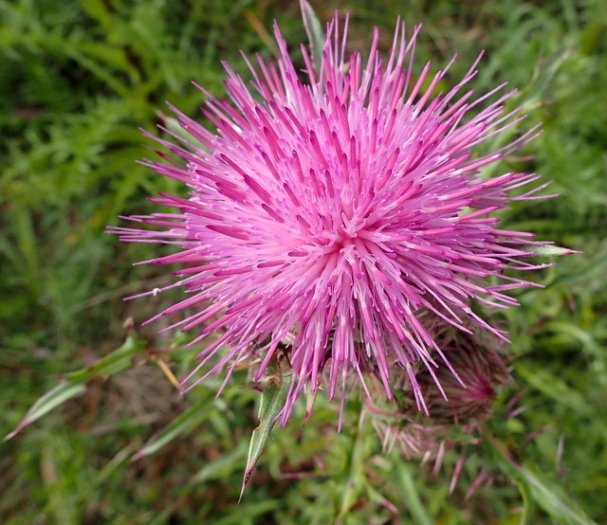Yellow Thistle
(Cirsium horridulum)
Yellow Thistle (Cirsium horridulum)
/
/

mfeaver
CC BY 4.0
Image By:
mfeaver
Recorded By:
Copyright:
CC BY 4.0
Copyright Notice:
Photo by: mfeaver | License Type: CC BY 4.0 | License URL: http://creativecommons.org/licenses/by/4.0/ | Rights Holder: mfeaver | Publisher: iNaturalist | Date Created: 2021-03-28T08:53:34-07:00 |




















































Estimated Native Range
Summary
Cirsium horridulum, commonly known as Yellow Thistle, is an annual or biennial herb native to open woodlands, coastal plains, and sandhills in the Southeastern United States. It can grow up to 250 centimeters (100 inches) tall, with a robust taproot and fleshy lateral roots that can give rise to new shoots. The leaves are up to 40 centimeters (16 inches) long, with thick, sharp spines along the edges, and the plant has a spiny stem. The flower heads are surrounded by spiny bracts, and each head contains numerous disc florets but no ray florets. The florets can vary in color from white to yellow, pink, red, or purple, typically blooming from spring to early summer. The flowers are quite showy and attract a variety of pollinators.
Yellow Thistle is valued for its striking appearance and is often used in wildflower gardens, naturalized areas, and restoration projects. It is drought-tolerant, requiring low amounts of water, and thrives in well-drained soils, preferring full sun conditions. While it is not commonly used in formal garden settings due to its spiny nature, it can be an interesting addition to a wildlife garden. Gardeners should be cautious, as it can become weedy and is considered invasive in some areas outside its native range.CC BY-SA 4.0
Yellow Thistle is valued for its striking appearance and is often used in wildflower gardens, naturalized areas, and restoration projects. It is drought-tolerant, requiring low amounts of water, and thrives in well-drained soils, preferring full sun conditions. While it is not commonly used in formal garden settings due to its spiny nature, it can be an interesting addition to a wildlife garden. Gardeners should be cautious, as it can become weedy and is considered invasive in some areas outside its native range.CC BY-SA 4.0
Plant Description
- Plant Type: Herb
- Height: 3-5 feet
- Width: 5-7.5 feet
- Growth Rate: Moderate
- Flower Color: Yellow
- Flowering Season: Spring, Summer
- Leaf Retention: Deciduous
Growth Requirements
- Sun: Full Sun
- Water: Low
- Drainage: Medium, Fast
Common Uses
Bee Garden, Bird Garden, Butterfly Garden, Hummingbird Garden
Natural Habitat
Open woodlands, coastal plains, and sandhills
Other Names
Common Names: Horrid Thistle, Bristly Thistle, Bull Thistle
Scientific Names: , Cirsium horridulum, Cirsium spinosissimum, Carduus spinosissimus, Cnicus horridulus, Cirsium horridulum var. elliottii, Cirsium horridulum f. elliottii, Cirsium horridulum subsp. horridulum, Cirsium chrismarii, Cirsium horridulum subsp. elliottii
GBIF Accepted Name: Cirsium horridulum Michx.